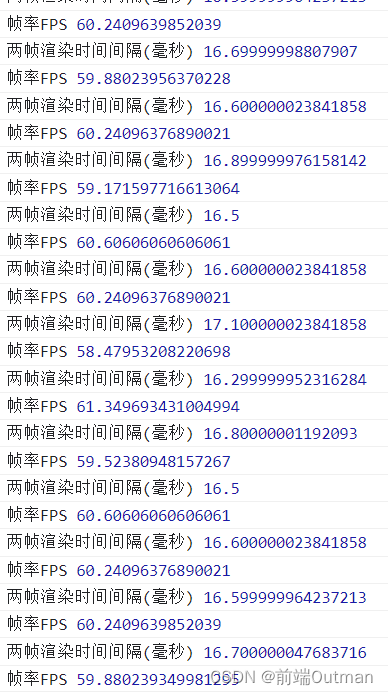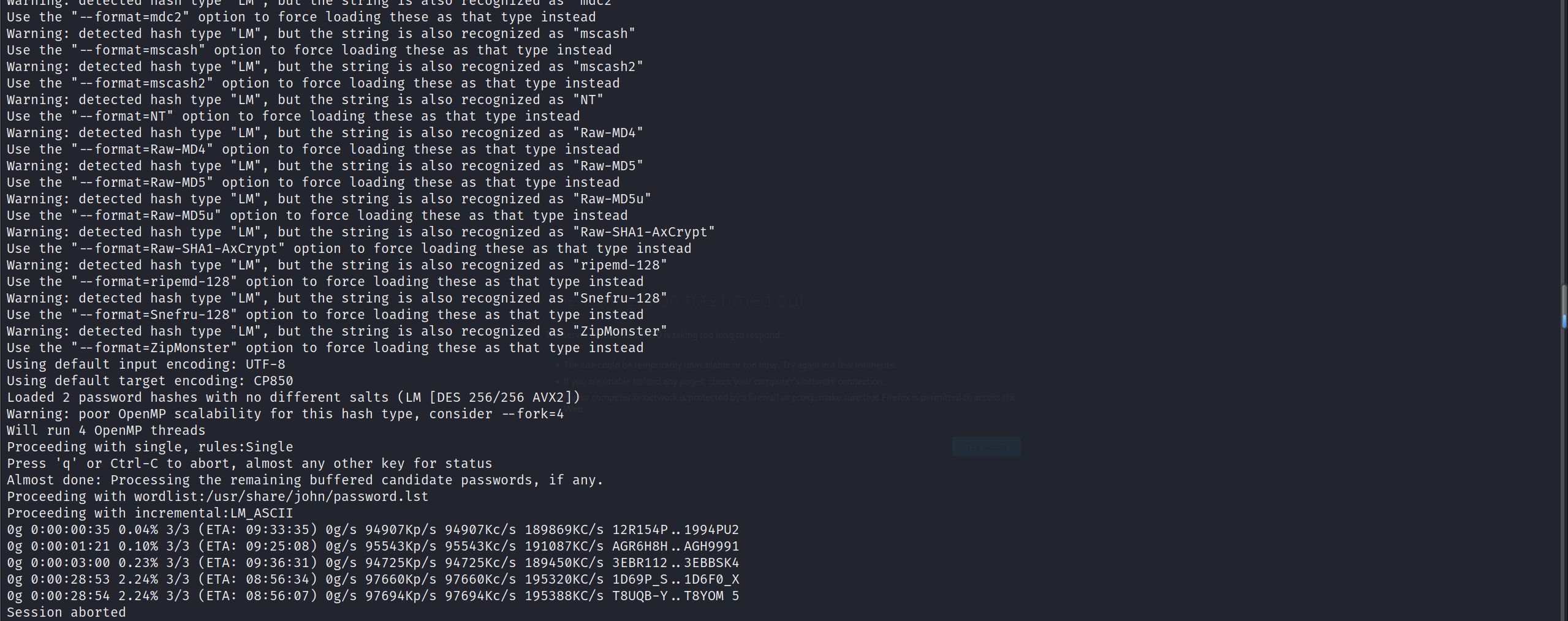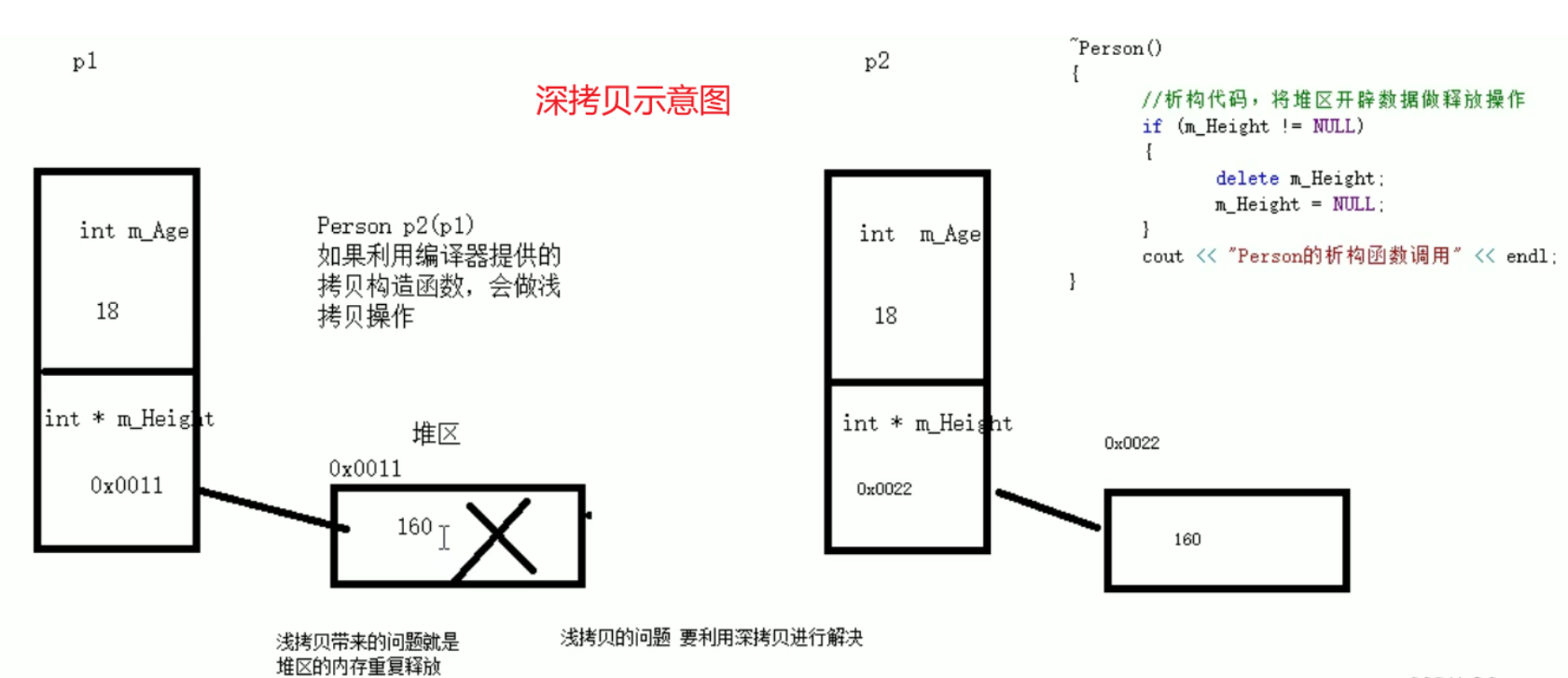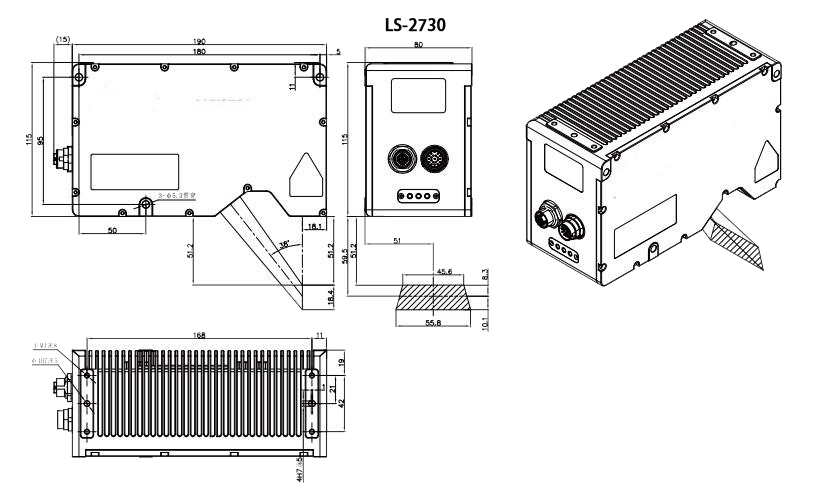💝💝💝欢迎来到我的博客,很高兴能够在这里和您见面!希望您在这里可以感受到一份轻松愉快的氛围,不仅可以获得有趣的内容和知识,也可以畅所欲言、分享您的想法和见解。
- 推荐:kuan 的首页,持续学习,不断总结,共同进步,活到老学到老
- 导航
- 檀越剑指大厂系列:全面总结 java 核心技术点,如集合,jvm,并发编程 redis,kafka,Spring,微服务,Netty 等
- 常用开发工具系列:罗列常用的开发工具,如 IDEA,Mac,Alfred,electerm,Git,typora,apifox 等
- 数据库系列:详细总结了常用数据库 mysql 技术点,以及工作中遇到的 mysql 问题等
- 懒人运维系列:总结好用的命令,解放双手不香吗?能用一个命令完成绝不用两个操作
- 数据结构与算法系列:总结数据结构和算法,不同类型针对性训练,提升编程思维,剑指大厂
非常期待和您一起在这个小小的网络世界里共同探索、学习和成长。💝💝💝 ✨✨ 欢迎订阅本专栏 ✨✨
博客目录
- 一.简单介绍
- 1.B-树历史
- 2.B 的含义
- 3.特性
- 4.AVL 树高?
- 5.B 树树高?
- 二.常见方法
- 1.定义节点
- 2.多路查找
- 3.插入 key 和 child
- 4.定义树
- 5.插入
- 三.核心方法
- 1.分裂
- 2.删除
- 3.完整代码
- 4.B-树与 2-3 树、2-3-4 树的关系
- 四.B+树
一.简单介绍
1.B-树历史
B 树(B-Tree)结构是一种高效存储和查询数据的方法,它的历史可以追溯到 1970 年代早期。B 树的发明人 Rudolf Bayer 和 Edward M. McCreight 分别发表了一篇论文介绍了 B 树。这篇论文是 1972 年发表于《ACM Transactions on Database Systems》中的,题目为"Organization and Maintenance of Large Ordered Indexes"。
这篇论文提出了一种能够高效地维护大型有序索引的方法,这种方法的主要思想是将每个节点扩展成多个子节点,以减少查找所需的次数。B 树结构非常适合应用于磁盘等大型存储器的高效操作,被广泛应用于关系数据库和文件系统中。
B 树结构有很多变种和升级版,例如 B+树,B*树和 SB 树等。这些变种和升级版本都基于 B 树的核心思想,通过调整 B 树的参数和结构,提高了 B 树在不同场景下的性能表现。
总的来说,B 树结构是一个非常重要的数据结构,为高效存储和查询大量数据提供了可靠的方法。它的历史可以追溯到上个世纪 70 年代,而且在今天仍然被广泛应用于各种场景。
2.B 的含义
B-树的名称是由其发明者 Rudolf Bayer 提出的。Bayer 和 McCreight 从未解释 B 代表什么,人们提出了许多可能的解释,比如 Boeing、balanced、between、broad、bushy 和 Bayer 等。但 McCreight 表示,越是思考 B-trees 中的 B 代表什么,就越能更好地理解 B-trees
3.特性
一棵 B-树具有以下性质
特性 1:每个节点 x 具有
- 属性 n,表示节点 x 中 key 的个数
- 属性 leaf,表示节点是否是叶子节点
- 节点 key 可以有多个,以升序存储
特性 2:每个非叶子节点中的孩子数是 n + 1、叶子节点没有孩子
特性 3:最小度数 t(节点的孩子数称为度)和节点中键数量的关系如下:
| 最小度数 t | 键数量范围 |
|---|---|
| 2 | 1 ~ 3 |
| 3 | 2 ~ 5 |
| 4 | 3 ~ 7 |
| … | … |
| n | (n-1) ~ (2n-1) |
其中,当节点中键数量达到其最大值时,即 3、5、7 … 2n-1,需要分裂
特性 4:叶子节点的深度都相同
问:
B-树为什么有最小度数的限制?
答:
B 树中有最小度数的限制是为了保证 B 树的平衡特性。
在 B 树中,每个节点都可以有多个子节点,这使得 B 树可以存储大量的键值,但也带来了一些问题。如果节点的子节点数量太少,那么就可能导致 B 树的高度过高,从而降低了 B 树的效率。此外,如果节点的子节点数量太多,那么就可能导致节点的搜索、插入和删除操作变得复杂和低效。
最小度数的限制通过限制节点的子节点数量,来平衡这些问题。在 B 树中,每个节点的子节点数量都必须在一定的范围内,即 t 到 2t 之间(其中 t 为最小度数)
4.AVL 树高?
100 万的数据使用 avl 树来存储,树高是多少?
AVL 树是一种自平衡二叉搜索树,它的树高(或称为高度)受到节点插入和删除操作的影响,保持在 O(log n) 的水平。在这里,“n” 表示树中节点的数量。
如果你有 100 万个数据要存储在 AVL 树中,树的高度应该接近于 log2(1000000)。计算一下:
log2(1000000) ≈ 19.93
所以,树的高度大约为 20 层(向上取整)。这意味着在 AVL 树中查找、插入和删除操作的时间复杂度通常都在 O(log n) 的范围内,其中 n 是树中的节点数。因此,AVL 树在维护平衡方面非常高效,适合用于需要高效查找和插入的数据结构。
5.B 树树高?
100 万的数据,如果存储到 B-树(最小度数是 500),那么树高大约是多少?
B-树的高度与其最小度数以及存储的关键字数量有关。最小度数表示每个节点最少有多少个子节点。在一个典型的 B-树中,树的高度通常较低,因为它能够容纳更多的关键字在每个节点中。
如果你有 100 万个数据要存储在一个 B-树中,而该 B-树的最小度数为 500,那么我们可以计算大致的树高:
首先,根节点至少包含一个子节点和两个关键字(除非它是叶子节点),然后每个内部节点至少包含 500 个子节点和 501 个关键字。我们可以使用以下方式计算树的高度:
树的高度 = log_500(1000000)
使用换底公式,我们可以将其转换为常用的对数底数,如自然对数或以 2 为底的对数。在这里,我们使用以 2 为底的对数:
树的高度 ≈ log2(1000000) / log2(500)
计算一下:
树的高度 ≈ 19.93 / 8.97 ≈ 2.22
所以,如果将 100 万个数据存储在一个 B-树中,而最小度数为 500,那么树的高度大约是 2.22,但由于树的高度是整数,所以实际树的高度将会是 3。这意味着 B-树的高度较低,使得查找和插入等操作非常高效,适合用于大规模数据的存储和检索。
二.常见方法
1.定义节点
static class Node {
boolean leaf = true;
int keyNumber;
int t;
int[] keys;
Node[] children;
public Node(int t) {
this.t = t;
this.keys = new int[2 * t - 1];
this.children = new Node[2 * t];
}
@Override
public String toString() {
return Arrays.toString(Arrays.copyOfRange(keys, 0, keyNumber));
}
}
- leaf 表示是否为叶子节点
- keyNumber 为 keys 中有效 key 数目
- t 为最小度数,它决定了节点中 key 的最小、最大数目,分别是 t-1 和 2t-1
- keys 存储此节点的 key
- children 存储此节点的 child
- toString 只是为了方便调试和测试,非必须
实际 keys 应当改为 entries 以便同时保存 key 和 value,刚开始简化实现
2.多路查找
为上面节点类添加 get 方法
Node get(int key) {
int i = 0;
while (i < keyNumber && keys[i] < key) {
i++;
}
if (i < keyNumber && keys[i] == key) {
return this;
}
if (leaf) {
return null;
}
return children[i].get(key);
}
3.插入 key 和 child
为上面节点类添加 insertKey 和 insertChild 方法
void insertKey(int key, int index) {
System.arraycopy(keys, index, keys, index + 1, keyNumber - index);
keys[index] = key;
keyNumber++;
}
void insertChild(Node child, int index) {
System.arraycopy(children, index, children, index + 1, keyNumber - index);
children[index] = child;
}
作用是向 keys 数组或 children 数组指定 index 处插入新数据,注意
- 由于使用了静态数组,并且不会在新增或删除时改变它的大小,因此需要额外的 keyNumber 来指定数组内有效 key 的数目
- 插入时 keyNumber++
- 删除时减少 keyNumber 的值即可
- children 不会单独维护数目,它比 keys 多一个
- 如果这两个方法同时调用,注意它们的先后顺序,insertChild 后调用,因为它计算复制元素个数时用到了 keyNumber
4.定义树
public class BTree {
final int t;
final int MIN_KEY_NUMBER;
final int MAX_KEY_NUMBER;
Node root;
public BTree() {
this(2);
}
public BTree(int t) {
this.t = t;
MIN_KEY_NUMBER = t - 1;
MAX_KEY_NUMBER = 2 * t - 1;
root = new Node(t);
}
}
5.插入
public void put(int key) {
doPut(null, 0, root, key);
}
private void doPut(Node parent, int index, Node node, int key) {
int i = 0;
while (i < node.keyNumber && node.keys[i] < key) {
i++;
}
if (i < node.keyNumber && node.keys[i] == key) {
return;
}
if (node.leaf) {
node.insertKey(key, i);
} else {
doPut(node, i, node.children[i], key);
}
if (isFull(node)) {
split(parent, index, node);
}
}
- 首先查找本节点中的插入位置 i,如果没有空位(key 被找到),应该走更新的逻辑,目前什么没做
- 接下来分两种情况
- 如果节点是叶子节点,可以直接插入了
- 如果节点是非叶子节点,需要继续在 children[i] 处继续递归插入
- 无论哪种情况,插入完成后都可能超过节点 keys 数目限制,此时应当执行节点分裂
- 参数中的 parent 和 index 都是给分裂方法用的,代表当前节点父节点,和分裂节点是第几个孩子
判断依据为:
boolean isFull(Node node) {
return node.keyNumber == MAX_KEY_NUMBER;
}
三.核心方法
1.分裂
void split(Node parent, int index , Node left) {
if (parent == null) {
Node newRoot = new Node(this.t);
newRoot.leaf = false;
newRoot.insertChild(root, 0);
root = newRoot;
parent = newRoot;
}
Node right = new Node(this.t);
right.leaf = left.leaf;
right.keyNumber = t - 1;
System.arraycopy(left.keys, t, right.keys, 0, t - 1);
if (!left.leaf) {
System.arraycopy(left.children, t, right.children, 0, t);
}
left.keyNumber = t - 1;
int mid = left.keys[t - 1];
parent.insertKey(mid, index);
parent.insertChild(right, index + 1);
}
分两种情况:
- 如果 parent == null 表示要分裂的是根节点,此时需要创建新根,原来的根节点作为新根的 0 孩子
- 否则
- 创建 right 节点(分裂后大于当前 left 节点的),把 t 以后的 key 和 child 都拷贝过去
- t-1 处的 key 插入到 parent 的 index 处,index 指 left 作为孩子时的索引
- right 节点作为 parent 的孩子插入到 index + 1 处
2.删除
case 1:当前节点是叶子节点,没找到
case 2:当前节点是叶子节点,找到了
case 3:当前节点是非叶子节点,没找到
case 4:当前节点是非叶子节点,找到了
case 5:删除后 key 数目 < 下限(不平衡)
case 6:根节点
3.完整代码
package com.itheima.algorithm.btree;
import java.util.Arrays;
/**
* <h3>B-树</h3>
*/
@SuppressWarnings("all")
public class BTree {
static class Node {
int[] keys; // 关键字
Node[] children; // 孩子
int keyNumber; // 有效关键字数目
boolean leaf = true; // 是否是叶子节点
int t; // 最小度数 (最小孩子数)
public Node(int t) { // t>=2
this.t = t;
this.children = new Node[2 * t];
this.keys = new int[2 * t - 1];
}
public Node(int[] keys) {
this.keys = keys;
}
@Override
public String toString() {
return Arrays.toString(Arrays.copyOfRange(keys, 0, keyNumber));
}
// 多路查找
Node get(int key) {
int i = 0;
while (i < keyNumber) {
if (keys[i] == key) {
return this;
}
if (keys[i] > key) {
break;
}
i++;
}
// 执行到此时 keys[i]>key 或 i==keyNumber
if (leaf) {
return null;
}
// 非叶子情况
return children[i].get(key);
}
// 向 keys 指定索引处插入 key
void insertKey(int key, int index) {
System.arraycopy(keys, index, keys, index + 1, keyNumber - index);
keys[index] = key;
keyNumber++;
}
// 向 children 指定索引处插入 child
void insertChild(Node child, int index) {
System.arraycopy(children, index, children, index + 1, keyNumber - index);
children[index] = child;
}
int removeKey(int index) {
int t = keys[index];
System.arraycopy(keys, index + 1, keys, index, --keyNumber - index);
return t;
}
int removeLeftmostKey() {
return removeKey(0);
}
int removeRightmostKey() {
return removeKey(keyNumber - 1);
}
Node removeChild(int index) {
Node t = children[index];
System.arraycopy(children, index + 1, children, index, keyNumber - index);
children[keyNumber] = null;
return t;
}
Node removeLeftmostChild() {
return removeChild(0);
}
Node removeRightmostChild() {
return removeChild(keyNumber);
}
void moveToLeft(Node left) {
int start = left.keyNumber;
if (!leaf) {
for (int i = 0; i <= keyNumber; i++) {
left.children[start + i] = children[i];
}
}
for (int i = 0; i < keyNumber; i++) {
left.keys[left.keyNumber++] = keys[i];
}
}
Node leftSibling(int index) {
return index > 0 ? children[index - 1] : null;
}
Node rightSibling(int index) {
return index == keyNumber ? null : children[index + 1];
}
}
Node root;
int t; // 树中节点最小度数
final int MIN_KEY_NUMBER; // 最小key数目
final int MAX_KEY_NUMBER; // 最大key数目
public BTree() {
this(2);
}
public BTree(int t) {
this.t = t;
root = new Node(t);
MAX_KEY_NUMBER = 2 * t - 1;
MIN_KEY_NUMBER = t - 1;
}
// 1. 是否存在
public boolean contains(int key) {
return root.get(key) != null;
}
// 2. 新增
public void put(int key) {
doPut(root, key, null, 0);
}
private void doPut(Node node, int key, Node parent, int index) {
int i = 0;
while (i < node.keyNumber) {
if (node.keys[i] == key) {
return; // 更新
}
if (node.keys[i] > key) {
break; // 找到了插入位置,即为此时的 i
}
i++;
}
if (node.leaf) {
node.insertKey(key, i);
} else {
doPut(node.children[i], key, node, i);
}
if (node.keyNumber == MAX_KEY_NUMBER) {
split(node, parent, index);
}
}
/**
* <h3>分裂方法</h3>
*
* @param left 要分裂的节点
* @param parent 分裂节点的父节点
* @param index 分裂节点是第几个孩子
*/
void split(Node left, Node parent, int index) {
// 分裂的是根节点
if (parent == null) {
Node newRoot = new Node(t);
newRoot.leaf = false;
newRoot.insertChild(left, 0);
this.root = newRoot;
parent = newRoot;
}
// 1. 创建 right 节点,把 left 中 t 之后的 key 和 child 移动过去
Node right = new Node(t);
right.leaf = left.leaf;
System.arraycopy(left.keys, t, right.keys, 0, t - 1);
// 分裂节点是非叶子的情况
if (!left.leaf) {
System.arraycopy(left.children, t, right.children, 0, t);
for (int i = t; i <= left.keyNumber; i++) {
left.children[i] = null;
}
}
right.keyNumber = t - 1;
left.keyNumber = t - 1;
// 2. 中间的 key (t-1 处)插入到父节点
int mid = left.keys[t - 1];
parent.insertKey(mid, index);
// 3. right 节点作为父节点的孩子
parent.insertChild(right, index + 1);
}
// 3. 删除
public void remove(int key) {
doRemove(root, key, null, 0);
}
private void doRemove(Node node, int key, Node parent, int index) {
int i = 0;
while (i < node.keyNumber) {
if (node.keys[i] >= key) {
break;
}
i++;
}
if (node.leaf) {
if (notFound(node, key, i)) { // case 1
return;
}
node.removeKey(i); // case 2
} else {
if (notFound(node, key, i)) { // case 3
doRemove(node.children[i], key, node, i);
} else { // case 4
Node s = node.children[i + 1];
while (!s.leaf) {
s = s.children[0];
}
int k = s.keys[0];
node.keys[i] = k;
doRemove(node.children[i + 1], k, node, i + 1);
}
}
if (node.keyNumber < MIN_KEY_NUMBER) { // case 5
balance(node, parent, index);
}
}
private boolean notFound(Node node, int key, int i) {
return i >= node.keyNumber || (i < node.keyNumber && node.keys[i] != key);
}
private void balance(Node node, Node parent, int i) {
if (node == root) {
if (root.keyNumber == 0 && root.children[0] != null) {
root = root.children[0];
}
return;
}
Node leftSibling = parent.leftSibling(i);
Node rightSibling = parent.rightSibling(i);
if (leftSibling != null && leftSibling.keyNumber > MIN_KEY_NUMBER) {
rightRotate(node, leftSibling, parent, i);
return;
}
if (rightSibling != null && rightSibling.keyNumber > MIN_KEY_NUMBER) {
leftRotate(node, rightSibling, parent, i);
return;
}
if (leftSibling != null) {
mergeToLeft(leftSibling, parent, i - 1);
} else {
mergeToLeft(node, parent, i);
}
}
private void mergeToLeft(Node left, Node parent, int i) {
Node right = parent.removeChild(i + 1);
left.insertKey(parent.removeKey(i), left.keyNumber);
right.moveToLeft(left);
}
private void rightRotate(Node node, Node leftSibling, Node parent, int i) {
node.insertKey(parent.keys[i - 1], 0);
if (!leftSibling.leaf) {
node.insertChild(leftSibling.removeRightmostChild(), 0);
}
parent.keys[i - 1] = leftSibling.removeRightmostKey();
}
private void leftRotate(Node node, Node rightSibling, Node parent, int i) {
node.insertKey(parent.keys[i], node.keyNumber);
if (!rightSibling.leaf) {
node.insertChild(rightSibling.removeLeftmostChild(), node.keyNumber + 1);
}
parent.keys[i] = rightSibling.removeLeftmostKey();
}
}
4.B-树与 2-3 树、2-3-4 树的关系
可以这样总结它们之间的关系:
- 2-3 树是最小度数为 2 的 B 树,其中每个节点可以包含 2 个或 3 个子节点。
- 2-3-4 树是最小度数为 2 的 B 树的一种特殊情况,其中每个节点可以包含 2 个、3 个或 4 个子节点。
- B 树是一种更加一般化的平衡树,可以适应不同的应用场景,其节点可以包含任意数量的键值,节点的度数取决于最小度数 t 的设定。
四.B+树
package com.kwan.shuyu.datastructure.btree;
import java.io.File;
import java.io.FileNotFoundException;
import java.io.FileWriter;
import java.io.IOException;
import java.util.ArrayList;
import java.util.Arrays;
import java.util.Comparator;
import java.util.Scanner;
/**
* B+树
*
* @author : qinyingjie
* @version : 2.2.0
* @date : 2023/9/19 09:52
*/
public class BPlusTree {
int m;
InternalNode root;
LeafNode firstLeaf;
/*~~~~~~~~~~~~~~~~ HELPER FUNCTIONS ~~~~~~~~~~~~~~~~*/
/**
* This method performs a standard binary search on a sorted
* DictionaryPair[] and returns the index of the dictionary pair
* with target key t if found. Otherwise, this method returns a negative
* value.
*
* @param dps: list of dictionary pairs sorted by key within leaf node
* @param t: target key value of dictionary pair being searched for
* @return index of the target value if found, else a negative value
*/
private int binarySearch(DictionaryPair[] dps, int numPairs, int t) {
Comparator<DictionaryPair> c = (o1, o2) -> {
Integer a = o1.key;
Integer b = o2.key;
return a.compareTo(b);
};
return Arrays.binarySearch(dps, 0, numPairs, new DictionaryPair(t, 0), c);
}
/**
* This method starts at the root of the B+ tree and traverses down the
* tree via key comparisons to the corresponding leaf node that holds 'key'
* within its dictionary.
*
* @param key: the unique key that lies within the dictionary of a LeafNode object
* @return the LeafNode object that contains the key within its dictionary
*/
private LeafNode findLeafNode(int key) {
// Initialize keys and index variable
Integer[] keys = this.root.keys;
int i;
// Find next node on path to appropriate leaf node
for (i = 0; i < this.root.degree - 1; i++) {
if (key < keys[i]) {
break;
}
}
/* Return node if it is a LeafNode object,
otherwise repeat the search function a level down */
Node child = this.root.childPointers[i];
if (child instanceof LeafNode) {
return (LeafNode) child;
} else {
return findLeafNode((InternalNode) child, key);
}
}
private LeafNode findLeafNode(InternalNode node, int key) {
// Initialize keys and index variable
Integer[] keys = node.keys;
int i;
// Find next node on path to appropriate leaf node
for (i = 0; i < node.degree - 1; i++) {
if (key < keys[i]) {
break;
}
}
/* Return node if it is a LeafNode object,
otherwise repeat the search function a level down */
Node childNode = node.childPointers[i];
if (childNode instanceof LeafNode) {
return (LeafNode) childNode;
} else {
return findLeafNode((InternalNode) node.childPointers[i], key);
}
}
/**
* Given a list of pointers to Node objects, this method returns the index of
* the pointer that points to the specified 'node' LeafNode object.
*
* @param pointers: a list of pointers to Node objects
* @param node: a specific pointer to a LeafNode
* @return (int) index of pointer in list of pointers
*/
private int findIndexOfPointer(Node[] pointers, LeafNode node) {
int i;
for (i = 0; i < pointers.length; i++) {
if (pointers[i] == node) {
break;
}
}
return i;
}
/**
* This is a simple method that returns the midpoint (or lower bound
* depending on the context of the method invocation) of the max degree m of
* the B+ tree.
*
* @return (int) midpoint/lower bound
*/
private int getMidpoint() {
return (int) Math.ceil((this.m + 1) / 2.0) - 1;
}
/**
* Given a deficient InternalNode in, this method remedies the deficiency
* through borrowing and merging.
*
* @param in: a deficient InternalNode
*/
private void handleDeficiency(InternalNode in) {
InternalNode sibling;
InternalNode parent = in.parent;
// Remedy deficient root node
if (this.root == in) {
for (int i = 0; i < in.childPointers.length; i++) {
if (in.childPointers[i] != null) {
if (in.childPointers[i] instanceof InternalNode) {
this.root = (InternalNode) in.childPointers[i];
this.root.parent = null;
} else if (in.childPointers[i] instanceof LeafNode) {
this.root = null;
}
}
}
}
// Borrow:
else if (in.leftSibling != null && in.leftSibling.isLendable()) {
sibling = in.leftSibling;
} else if (in.rightSibling != null && in.rightSibling.isLendable()) {
sibling = in.rightSibling;
// Copy 1 key and pointer from sibling (atm just 1 key)
int borrowedKey = sibling.keys[0];
Node pointer = sibling.childPointers[0];
// Copy root key and pointer into parent
in.keys[in.degree - 1] = parent.keys[0];
in.childPointers[in.degree] = pointer;
// Copy borrowedKey into root
parent.keys[0] = borrowedKey;
// Delete key and pointer from sibling
sibling.removePointer(0);
Arrays.sort(sibling.keys);
sibling.removePointer(0);
shiftDown(in.childPointers, 1);
}
// Merge:
else if (in.leftSibling != null && in.leftSibling.isMergeable()) {
} else if (in.rightSibling != null && in.rightSibling.isMergeable()) {
sibling = in.rightSibling;
// Copy rightmost key in parent to beginning of sibling's keys &
// delete key from parent
sibling.keys[sibling.degree - 1] = parent.keys[parent.degree - 2];
Arrays.sort(sibling.keys, 0, sibling.degree);
parent.keys[parent.degree - 2] = null;
// Copy in's child pointer over to sibling's list of child pointers
for (int i = 0; i < in.childPointers.length; i++) {
if (in.childPointers[i] != null) {
sibling.prependChildPointer(in.childPointers[i]);
in.childPointers[i].parent = sibling;
in.removePointer(i);
}
}
// Delete child pointer from grandparent to deficient node
parent.removePointer(in);
// Remove left sibling
sibling.leftSibling = in.leftSibling;
}
// Handle deficiency a level up if it exists
if (parent != null && parent.isDeficient()) {
handleDeficiency(parent);
}
}
/**
* This is a simple method that determines if the B+ tree is empty or not.
*
* @return a boolean indicating if the B+ tree is empty or not
*/
private boolean isEmpty() {
return firstLeaf == null;
}
/**
* This method performs a standard linear search on a sorted
* DictionaryPair[] and returns the index of the first null entry found.
* Otherwise, this method returns a -1. This method is primarily used in
* place of binarySearch() when the target t = null.
*
* @param dps: list of dictionary pairs sorted by key within leaf node
* @return index of the target value if found, else -1
*/
private int linearNullSearch(DictionaryPair[] dps) {
for (int i = 0; i < dps.length; i++) {
if (dps[i] == null) {
return i;
}
}
return -1;
}
/**
* This method performs a standard linear search on a list of Node[] pointers
* and returns the index of the first null entry found. Otherwise, this
* method returns a -1. This method is primarily used in place of
* binarySearch() when the target t = null.
*
* @param pointers: list of Node[] pointers
* @return index of the target value if found, else -1
*/
private int linearNullSearch(Node[] pointers) {
for (int i = 0; i < pointers.length; i++) {
if (pointers[i] == null) {
return i;
}
}
return -1;
}
/**
* This method is used to shift down a set of pointers that are prepended
* by null values.
*
* @param pointers: the list of pointers that are to be shifted
* @param amount: the amount by which the pointers are to be shifted
*/
private void shiftDown(Node[] pointers, int amount) {
Node[] newPointers = new Node[this.m + 1];
for (int i = amount; i < pointers.length; i++) {
newPointers[i - amount] = pointers[i];
}
pointers = newPointers;
}
/**
* This is a specialized sorting method used upon lists of DictionaryPairs
* that may contain interspersed null values.
*
* @param dictionary: a list of DictionaryPair objects
*/
private void sortDictionary(DictionaryPair[] dictionary) {
Arrays.sort(dictionary, new Comparator<DictionaryPair>() {
@Override
public int compare(DictionaryPair o1, DictionaryPair o2) {
if (o1 == null && o2 == null) {
return 0;
}
if (o1 == null) {
return 1;
}
if (o2 == null) {
return -1;
}
return o1.compareTo(o2);
}
});
}
/**
* This method modifies the InternalNode 'in' by removing all pointers within
* the childPointers after the specified split. The method returns the removed
* pointers in a list of their own to be used when constructing a new
* InternalNode sibling.
*
* @param in: an InternalNode whose childPointers will be split
* @param split: the index at which the split in the childPointers begins
* @return a Node[] of the removed pointers
*/
private Node[] splitChildPointers(InternalNode in, int split) {
Node[] pointers = in.childPointers;
Node[] halfPointers = new Node[this.m + 1];
// Copy half of the values into halfPointers while updating original keys
for (int i = split + 1; i < pointers.length; i++) {
halfPointers[i - split - 1] = pointers[i];
in.removePointer(i);
}
return halfPointers;
}
/**
* This method splits a single dictionary into two dictionaries where all
* dictionaries are of equal length, but each of the resulting dictionaries
* holds half of the original dictionary's non-null values. This method is
* primarily used when splitting a node within the B+ tree. The dictionary of
* the specified LeafNode is modified in place. The method returns the
* remainder of the DictionaryPairs that are no longer within ln's dictionary.
*
* @param ln: list of DictionaryPairs to be split
* @param split: the index at which the split occurs
* @return DictionaryPair[] of the two split dictionaries
*/
private DictionaryPair[] splitDictionary(LeafNode ln, int split) {
DictionaryPair[] dictionary = ln.dictionary;
/* Initialize two dictionaries that each hold half of the original
dictionary values */
DictionaryPair[] halfDict = new DictionaryPair[this.m];
// Copy half of the values into halfDict
for (int i = split; i < dictionary.length; i++) {
halfDict[i - split] = dictionary[i];
ln.delete(i);
}
return halfDict;
}
/**
* When an insertion into the B+ tree causes an overfull node, this method
* is called to remedy the issue, i.e. to split the overfull node. This method
* calls the sub-methods of splitKeys() and splitChildPointers() in order to
* split the overfull node.
*
* @param in: an overfull InternalNode that is to be split
*/
private void splitInternalNode(InternalNode in) {
// Acquire parent
InternalNode parent = in.parent;
// Split keys and pointers in half
int midpoint = getMidpoint();
int newParentKey = in.keys[midpoint];
Integer[] halfKeys = splitKeys(in.keys, midpoint);
Node[] halfPointers = splitChildPointers(in, midpoint);
// Change degree of original InternalNode in
in.degree = linearNullSearch(in.childPointers);
// Create new sibling internal node and add half of keys and pointers
InternalNode sibling = new InternalNode(this.m, halfKeys, halfPointers);
for (Node pointer : halfPointers) {
if (pointer != null) {
pointer.parent = sibling;
}
}
// Make internal nodes siblings of one another
sibling.rightSibling = in.rightSibling;
if (sibling.rightSibling != null) {
sibling.rightSibling.leftSibling = sibling;
}
in.rightSibling = sibling;
sibling.leftSibling = in;
if (parent == null) {
// Create new root node and add midpoint key and pointers
Integer[] keys = new Integer[this.m];
keys[0] = newParentKey;
InternalNode newRoot = new InternalNode(this.m, keys);
newRoot.appendChildPointer(in);
newRoot.appendChildPointer(sibling);
this.root = newRoot;
// Add pointers from children to parent
in.parent = newRoot;
sibling.parent = newRoot;
} else {
// Add key to parent
parent.keys[parent.degree - 1] = newParentKey;
Arrays.sort(parent.keys, 0, parent.degree);
// Set up pointer to new sibling
int pointerIndex = parent.findIndexOfPointer(in) + 1;
parent.insertChildPointer(sibling, pointerIndex);
sibling.parent = parent;
}
}
/**
* This method modifies a list of Integer-typed objects that represent keys
* by removing half of the keys and returning them in a separate Integer[].
* This method is used when splitting an InternalNode object.
*
* @param keys: a list of Integer objects
* @param split: the index where the split is to occur
* @return Integer[] of removed keys
*/
private Integer[] splitKeys(Integer[] keys, int split) {
Integer[] halfKeys = new Integer[this.m];
// Remove split-indexed value from keys
keys[split] = null;
// Copy half of the values into halfKeys while updating original keys
for (int i = split + 1; i < keys.length; i++) {
halfKeys[i - split - 1] = keys[i];
keys[i] = null;
}
return halfKeys;
}
/*~~~~~~~~~~~~~~~~ API: DELETE, INSERT, SEARCH ~~~~~~~~~~~~~~~~*/
/**
* Given a key, this method will remove the dictionary pair with the
* corresponding key from the B+ tree.
*
* @param key: an integer key that corresponds with an existing dictionary
* pair
*/
public void delete(int key) {
if (isEmpty()) {
/* Flow of execution goes here when B+ tree has no dictionary pairs */
System.err.println("Invalid Delete: The B+ tree is currently empty.");
} else {
// Get leaf node and attempt to find index of key to delete
LeafNode ln = (this.root == null) ? this.firstLeaf : findLeafNode(key);
int dpIndex = binarySearch(ln.dictionary, ln.numPairs, key);
if (dpIndex < 0) {
/* Flow of execution goes here when key is absent in B+ tree */
System.err.println("Invalid Delete: Key unable to be found.");
} else {
// Successfully delete the dictionary pair
ln.delete(dpIndex);
// Check for deficiencies
if (ln.isDeficient()) {
LeafNode sibling;
InternalNode parent = ln.parent;
// Borrow: First, check the left sibling, then the right sibling
if (ln.leftSibling != null &&
ln.leftSibling.parent == ln.parent &&
ln.leftSibling.isLendable()) {
sibling = ln.leftSibling;
DictionaryPair borrowedDP = sibling.dictionary[sibling.numPairs - 1];
/* Insert borrowed dictionary pair, sort dictionary,
and delete dictionary pair from sibling */
ln.insert(borrowedDP);
sortDictionary(ln.dictionary);
sibling.delete(sibling.numPairs - 1);
// Update key in parent if necessary
int pointerIndex = findIndexOfPointer(parent.childPointers, ln);
if (!(borrowedDP.key >= parent.keys[pointerIndex - 1])) {
parent.keys[pointerIndex - 1] = ln.dictionary[0].key;
}
} else if (ln.rightSibling != null &&
ln.rightSibling.parent == ln.parent &&
ln.rightSibling.isLendable()) {
sibling = ln.rightSibling;
DictionaryPair borrowedDP = sibling.dictionary[0];
/* Insert borrowed dictionary pair, sort dictionary,
and delete dictionary pair from sibling */
ln.insert(borrowedDP);
sibling.delete(0);
sortDictionary(sibling.dictionary);
// Update key in parent if necessary
int pointerIndex = findIndexOfPointer(parent.childPointers, ln);
if (!(borrowedDP.key < parent.keys[pointerIndex])) {
parent.keys[pointerIndex] = sibling.dictionary[0].key;
}
}
// Merge: First, check the left sibling, then the right sibling
else if (ln.leftSibling != null &&
ln.leftSibling.parent == ln.parent &&
ln.leftSibling.isMergeable()) {
sibling = ln.leftSibling;
int pointerIndex = findIndexOfPointer(parent.childPointers, ln);
// Remove key and child pointer from parent
parent.removeKey(pointerIndex - 1);
parent.removePointer(ln);
// Update sibling pointer
sibling.rightSibling = ln.rightSibling;
// Check for deficiencies in parent
if (parent.isDeficient()) {
handleDeficiency(parent);
}
} else if (ln.rightSibling != null &&
ln.rightSibling.parent == ln.parent &&
ln.rightSibling.isMergeable()) {
sibling = ln.rightSibling;
int pointerIndex = findIndexOfPointer(parent.childPointers, ln);
// Remove key and child pointer from parent
parent.removeKey(pointerIndex);
parent.removePointer(pointerIndex);
// Update sibling pointer
sibling.leftSibling = ln.leftSibling;
if (sibling.leftSibling == null) {
firstLeaf = sibling;
}
if (parent.isDeficient()) {
handleDeficiency(parent);
}
}
} else if (this.root == null && this.firstLeaf.numPairs == 0) {
/* Flow of execution goes here when the deleted dictionary
pair was the only pair within the tree */
// Set first leaf as null to indicate B+ tree is empty
this.firstLeaf = null;
} else {
/* The dictionary of the LeafNode object may need to be
sorted after a successful delete */
sortDictionary(ln.dictionary);
}
}
}
}
/**
* Given an integer key and floating point value, this method inserts a
* dictionary pair accordingly into the B+ tree.
*
* @param key: an integer key to be used in the dictionary pair
* @param value: a floating point number to be used in the dictionary pair
*/
public void insert(int key, double value) {
if (isEmpty()) {
/* Flow of execution goes here only when first insert takes place */
// Create leaf node as first node in B plus tree (root is null)
LeafNode ln = new LeafNode(this.m, new DictionaryPair(key, value));
// Set as first leaf node (can be used later for in-order leaf traversal)
this.firstLeaf = ln;
} else {
// Find leaf node to insert into
LeafNode ln = (this.root == null) ? this.firstLeaf :
findLeafNode(key);
// Insert into leaf node fails if node becomes overfull
if (!ln.insert(new DictionaryPair(key, value))) {
// Sort all the dictionary pairs with the included pair to be inserted
ln.dictionary[ln.numPairs] = new DictionaryPair(key, value);
ln.numPairs++;
sortDictionary(ln.dictionary);
// Split the sorted pairs into two halves
int midpoint = getMidpoint();
DictionaryPair[] halfDict = splitDictionary(ln, midpoint);
if (ln.parent == null) {
/* Flow of execution goes here when there is 1 node in tree */
// Create internal node to serve as parent, use dictionary midpoint key
Integer[] parent_keys = new Integer[this.m];
parent_keys[0] = halfDict[0].key;
InternalNode parent = new InternalNode(this.m, parent_keys);
ln.parent = parent;
parent.appendChildPointer(ln);
} else {
/* Flow of execution goes here when parent exists */
// Add new key to parent for proper indexing
int newParentKey = halfDict[0].key;
ln.parent.keys[ln.parent.degree - 1] = newParentKey;
Arrays.sort(ln.parent.keys, 0, ln.parent.degree);
}
// Create new LeafNode that holds the other half
LeafNode newLeafNode = new LeafNode(this.m, halfDict, ln.parent);
// Update child pointers of parent node
int pointerIndex = ln.parent.findIndexOfPointer(ln) + 1;
ln.parent.insertChildPointer(newLeafNode, pointerIndex);
// Make leaf nodes siblings of one another
newLeafNode.rightSibling = ln.rightSibling;
if (newLeafNode.rightSibling != null) {
newLeafNode.rightSibling.leftSibling = newLeafNode;
}
ln.rightSibling = newLeafNode;
newLeafNode.leftSibling = ln;
if (this.root == null) {
// Set the root of B+ tree to be the parent
this.root = ln.parent;
} else {
/* If parent is overfull, repeat the process up the tree,
until no deficiencies are found */
InternalNode in = ln.parent;
while (in != null) {
if (in.isOverfull()) {
splitInternalNode(in);
} else {
break;
}
in = in.parent;
}
}
}
}
}
/**
* Given a key, this method returns the value associated with the key
* within a dictionary pair that exists inside the B+ tree.
*
* @param key: the key to be searched within the B+ tree
* @return the floating point value associated with the key within the B+ tree
*/
public Double search(int key) {
// If B+ tree is completely empty, simply return null
if (isEmpty()) {
return null;
}
// Find leaf node that holds the dictionary key
LeafNode ln = (this.root == null) ? this.firstLeaf : findLeafNode(key);
// Perform binary search to find index of key within dictionary
DictionaryPair[] dps = ln.dictionary;
int index = binarySearch(dps, ln.numPairs, key);
// If index negative, the key doesn't exist in B+ tree
if (index < 0) {
return null;
} else {
return dps[index].value;
}
}
/**
* This method traverses the doubly linked list of the B+ tree and records
* all values whose associated keys are within the range specified by
* lowerBound and upperBound.
*
* @param lowerBound: (int) the lower bound of the range
* @param upperBound: (int) the upper bound of the range
* @return an ArrayList<Double> that holds all values of dictionary pairs
* whose keys are within the specified range
*/
public ArrayList<Double> search(int lowerBound, int upperBound) {
// Instantiate Double array to hold values
ArrayList<Double> values = new ArrayList<Double>();
// Iterate through the doubly linked list of leaves
LeafNode currNode = this.firstLeaf;
while (currNode != null) {
// Iterate through the dictionary of each node
DictionaryPair[] dps = currNode.dictionary;
for (DictionaryPair dp : dps) {
/* Stop searching the dictionary once a null value is encountered
as this the indicates the end of non-null values */
if (dp == null) {
break;
}
// Include value if its key fits within the provided range
if (lowerBound <= dp.key && dp.key <= upperBound) {
values.add(dp.value);
}
}
/* Update the current node to be the right sibling,
leaf traversal is from left to right */
currNode = currNode.rightSibling;
}
return values;
}
/**
* Constructor
*
* @param m: the order (fanout) of the B+ tree
*/
public BPlusTree(int m) {
this.m = m;
this.root = null;
}
/**
* This class represents a general node within the B+ tree and serves as a
* superclass of InternalNode and LeafNode.
*/
public class Node {
InternalNode parent;
}
/**
* This class represents the internal nodes within the B+ tree that traffic
* all search/insert/delete operations. An internal node only holds keys; it
* does not hold dictionary pairs.
*/
private class InternalNode extends Node {
int maxDegree;
int minDegree;
int degree;
InternalNode leftSibling;
InternalNode rightSibling;
Integer[] keys;
Node[] childPointers;
/**
* This method appends 'pointer' to the end of the childPointers
* instance variable of the InternalNode object. The pointer can point to
* an InternalNode object or a LeafNode object since the formal
* parameter specifies a Node object.
*
* @param pointer: Node pointer that is to be appended to the
* childPointers list
*/
private void appendChildPointer(Node pointer) {
this.childPointers[degree] = pointer;
this.degree++;
}
/**
* Given a Node pointer, this method will return the index of where the
* pointer lies within the childPointers instance variable. If the pointer
* can't be found, the method returns -1.
*
* @param pointer: a Node pointer that may lie within the childPointers
* instance variable
* @return the index of 'pointer' within childPointers, or -1 if
* 'pointer' can't be found
*/
private int findIndexOfPointer(Node pointer) {
for (int i = 0; i < childPointers.length; i++) {
if (childPointers[i] == pointer) {
return i;
}
}
return -1;
}
/**
* Given a pointer to a Node object and an integer index, this method
* inserts the pointer at the specified index within the childPointers
* instance variable. As a result of the insert, some pointers may be
* shifted to the right of the index.
*
* @param pointer: the Node pointer to be inserted
* @param index: the index at which the insert is to take place
*/
private void insertChildPointer(Node pointer, int index) {
for (int i = degree - 1; i >= index; i--) {
childPointers[i + 1] = childPointers[i];
}
this.childPointers[index] = pointer;
this.degree++;
}
/**
* This simple method determines if the InternalNode is deficient or not.
* An InternalNode is deficient when its current degree of children falls
* below the allowed minimum.
*
* @return a boolean indicating whether the InternalNode is deficient
* or not
*/
private boolean isDeficient() {
return this.degree < this.minDegree;
}
/**
* This simple method determines if the InternalNode is capable of
* lending one of its dictionary pairs to a deficient node. An InternalNode
* can give away a dictionary pair if its current degree is above the
* specified minimum.
*
* @return a boolean indicating whether or not the InternalNode has
* enough dictionary pairs in order to give one away.
*/
private boolean isLendable() {
return this.degree > this.minDegree;
}
/**
* This simple method determines if the InternalNode is capable of being
* merged with. An InternalNode can be merged with if it has the minimum
* degree of children.
*
* @return a boolean indicating whether or not the InternalNode can be
* merged with
*/
private boolean isMergeable() {
return this.degree == this.minDegree;
}
/**
* This simple method determines if the InternalNode is considered overfull,
* i.e. the InternalNode object's current degree is one more than the
* specified maximum.
*
* @return a boolean indicating if the InternalNode is overfull
*/
private boolean isOverfull() {
return this.degree == maxDegree + 1;
}
/**
* Given a pointer to a Node object, this method inserts the pointer to
* the beginning of the childPointers instance variable.
*
* @param pointer: the Node object to be prepended within childPointers
*/
private void prependChildPointer(Node pointer) {
for (int i = degree - 1; i >= 0; i--) {
childPointers[i + 1] = childPointers[i];
}
this.childPointers[0] = pointer;
this.degree++;
}
/**
* This method sets keys[index] to null. This method is used within the
* parent of a merging, deficient LeafNode.
*
* @param index: the location within keys to be set to null
*/
private void removeKey(int index) {
this.keys[index] = null;
}
/**
* This method sets childPointers[index] to null and additionally
* decrements the current degree of the InternalNode.
*
* @param index: the location within childPointers to be set to null
*/
private void removePointer(int index) {
this.childPointers[index] = null;
this.degree--;
}
/**
* This method removes 'pointer' from the childPointers instance
* variable and decrements the current degree of the InternalNode. The
* index where the pointer node was assigned is set to null.
*
* @param pointer: the Node pointer to be removed from childPointers
*/
private void removePointer(Node pointer) {
for (int i = 0; i < childPointers.length; i++) {
if (childPointers[i] == pointer) {
this.childPointers[i] = null;
}
}
this.degree--;
}
/**
* Constructor
*
* @param m: the max degree of the InternalNode
* @param keys: the list of keys that InternalNode is initialized with
*/
private InternalNode(int m, Integer[] keys) {
this.maxDegree = m;
this.minDegree = (int) Math.ceil(m / 2.0);
this.degree = 0;
this.keys = keys;
this.childPointers = new Node[this.maxDegree + 1];
}
/**
* Constructor
*
* @param m: the max degree of the InternalNode
* @param keys: the list of keys that InternalNode is initialized with
* @param pointers: the list of pointers that InternalNode is initialized with
*/
private InternalNode(int m, Integer[] keys, Node[] pointers) {
this.maxDegree = m;
this.minDegree = (int) Math.ceil(m / 2.0);
this.degree = linearNullSearch(pointers);
this.keys = keys;
this.childPointers = pointers;
}
}
/**
* This class represents the leaf nodes within the B+ tree that hold
* dictionary pairs. The leaf node has no children. The leaf node has a
* minimum and maximum number of dictionary pairs it can hold, as specified
* by m, the max degree of the B+ tree. The leaf nodes form a doubly linked
* list that, i.e. each leaf node has a left and right sibling
*/
public class LeafNode extends Node {
int maxNumPairs;
int minNumPairs;
int numPairs;
LeafNode leftSibling;
LeafNode rightSibling;
DictionaryPair[] dictionary;
/**
* Given an index, this method sets the dictionary pair at that index
* within the dictionary to null.
*
* @param index: the location within the dictionary to be set to null
*/
public void delete(int index) {
// Delete dictionary pair from leaf
this.dictionary[index] = null;
// Decrement numPairs
numPairs--;
}
/**
* This method attempts to insert a dictionary pair within the dictionary
* of the LeafNode object. If it succeeds, numPairs increments, the
* dictionary is sorted, and the boolean true is returned. If the method
* fails, the boolean false is returned.
*
* @param dp: the dictionary pair to be inserted
* @return a boolean indicating whether or not the insert was successful
*/
public boolean insert(DictionaryPair dp) {
if (this.isFull()) {
/* Flow of execution goes here when numPairs == maxNumPairs */
return false;
} else {
// Insert dictionary pair, increment numPairs, sort dictionary
this.dictionary[numPairs] = dp;
numPairs++;
Arrays.sort(this.dictionary, 0, numPairs);
return true;
}
}
/**
* This simple method determines if the LeafNode is deficient, i.e.
* the numPairs within the LeafNode object is below minNumPairs.
*
* @return a boolean indicating whether or not the LeafNode is deficient
*/
public boolean isDeficient() {
return numPairs < minNumPairs;
}
/**
* This simple method determines if the LeafNode is full, i.e. the
* numPairs within the LeafNode is equal to the maximum number of pairs.
*
* @return a boolean indicating whether or not the LeafNode is full
*/
public boolean isFull() {
return numPairs == maxNumPairs;
}
/**
* This simple method determines if the LeafNode object is capable of
* lending a dictionary pair to a deficient leaf node. The LeafNode
* object can lend a dictionary pair if its numPairs is greater than
* the minimum number of pairs it can hold.
*
* @return a boolean indicating whether or not the LeafNode object can
* give a dictionary pair to a deficient leaf node
*/
public boolean isLendable() {
return numPairs > minNumPairs;
}
/**
* This simple method determines if the LeafNode object is capable of
* being merged with, which occurs when the number of pairs within the
* LeafNode object is equal to the minimum number of pairs it can hold.
*
* @return a boolean indicating whether or not the LeafNode object can
* be merged with
*/
public boolean isMergeable() {
return numPairs == minNumPairs;
}
/**
* Constructor
*
* @param m: order of B+ tree that is used to calculate maxNumPairs and
* minNumPairs
* @param dp: first dictionary pair insert into new node
*/
public LeafNode(int m, DictionaryPair dp) {
this.maxNumPairs = m - 1;
this.minNumPairs = (int) (Math.ceil(m / 2.0) - 1);
this.dictionary = new DictionaryPair[m];
this.numPairs = 0;
this.insert(dp);
}
/**
* Constructor
*
* @param dps: list of DictionaryPair objects to be immediately inserted
* into new LeafNode object
* @param m: order of B+ tree that is used to calculate maxNumPairs and
* minNumPairs
* @param parent: parent of newly created child LeafNode
*/
public LeafNode(int m, DictionaryPair[] dps, InternalNode parent) {
this.maxNumPairs = m - 1;
this.minNumPairs = (int) (Math.ceil(m / 2) - 1);
this.dictionary = dps;
this.numPairs = linearNullSearch(dps);
this.parent = parent;
}
}
/**
* This class represents a dictionary pair that is to be contained within the
* leaf nodes of the B+ tree. The class implements the Comparable interface
* so that the DictionaryPair objects can be sorted later on.
*/
public class DictionaryPair implements Comparable<DictionaryPair> {
int key;
double value;
/**
* Constructor
*
* @param key: the key of the key-value pair
* @param value: the value of the key-value pair
*/
public DictionaryPair(int key, double value) {
this.key = key;
this.value = value;
}
/**
* This is a method that allows comparisons to take place between
* DictionaryPair objects in order to sort them later on
*
* @param o
* @return
*/
@Override
public int compareTo(DictionaryPair o) {
if (key == o.key) {
return 0;
} else if (key > o.key) {
return 1;
} else {
return -1;
}
}
}
public static void main(String[] args) {
// Ensure correct number of arguments
if (args.length != 1) {
System.err.println("usage: java BPlusTree <file_name>");
System.exit(-1);
}
// Read from file
String fileName = args[0];
try {
// Prepare to read input file
File file = new File(System.getProperty("user.dir") + "/" + fileName);
Scanner sc = new Scanner(file);
// Create output file in which search results will be stored
FileWriter logger = new FileWriter("output_file.txt", false);
boolean firstLine = true;
// Create initial B+ tree
BPlusTree bpt = null;
// Perform an operation for each line in the input file
while (sc.hasNextLine()) {
String line = sc.nextLine().replace(" ", "");
String[] tokens = line.split("[(,)]");
switch (tokens[0]) {
// Initializes an m-order B+ tree
case "Initialize":
bpt = new BPlusTree(Integer.parseInt(tokens[1]));
break;
// Insert a dictionary pair into the B+ tree
case "Insert":
bpt.insert(Integer.parseInt(tokens[1]), Double.parseDouble(tokens[2]));
break;
// Delete a dictionary pair from the B+ tree
case "Delete":
bpt.delete(Integer.parseInt(tokens[1]));
break;
// Perform a search or search operation on the B+ tree
case "Search":
String result = "";
// Perform search (across a range) operation
if (tokens.length == 3) {
ArrayList<Double> values = bpt.search(
Integer.parseInt(tokens[1]),
Integer.parseInt(tokens[2]));
// Record search result as a String
if (values.size() != 0) {
for (double v : values) {
result += v + ", ";
}
result = result.substring(0, result.length() - 2);
} else {
result = "Null";
}
}
// Perform search operation
else {
/* Perform search for key, if resulting value is
null, then the key could not be found */
Double value = bpt.search(Integer.parseInt(tokens[1]));
result = (value == null) ? "Null" :
Double.toString(value);
}
// Output search result in .txt file
if (firstLine) {
logger.write(result);
firstLine = false;
} else {
logger.write("\n" + result);
}
logger.flush();
break;
default:
throw new IllegalArgumentException("\"" + tokens[0] +
"\"" + " is an unacceptable input.");
}
}
// Close output file
logger.close();
} catch (FileNotFoundException e) {
System.err.println(e);
} catch (IllegalArgumentException e) {
System.err.println(e);
} catch (IOException e) {
System.err.println(e);
}
}
}
觉得有用的话点个赞
👍🏻呗。
❤️❤️❤️本人水平有限,如有纰漏,欢迎各位大佬评论批评指正!😄😄😄💘💘💘如果觉得这篇文对你有帮助的话,也请给个点赞、收藏下吧,非常感谢!👍 👍 👍
🔥🔥🔥Stay Hungry Stay Foolish 道阻且长,行则将至,让我们一起加油吧!🌙🌙🌙


![计算机视觉与深度学习-经典网络解析-VGG-[北邮鲁鹏]](https://img-blog.csdnimg.cn/bc065817335c4c4e92722bc22764435f.png)











![计算机视觉与深度学习-卷积神经网络-卷积图像去噪边缘提取-卷积-[北邮鲁鹏]](https://img-blog.csdnimg.cn/053b4862d7574c61876343a6cf7460fc.png)






